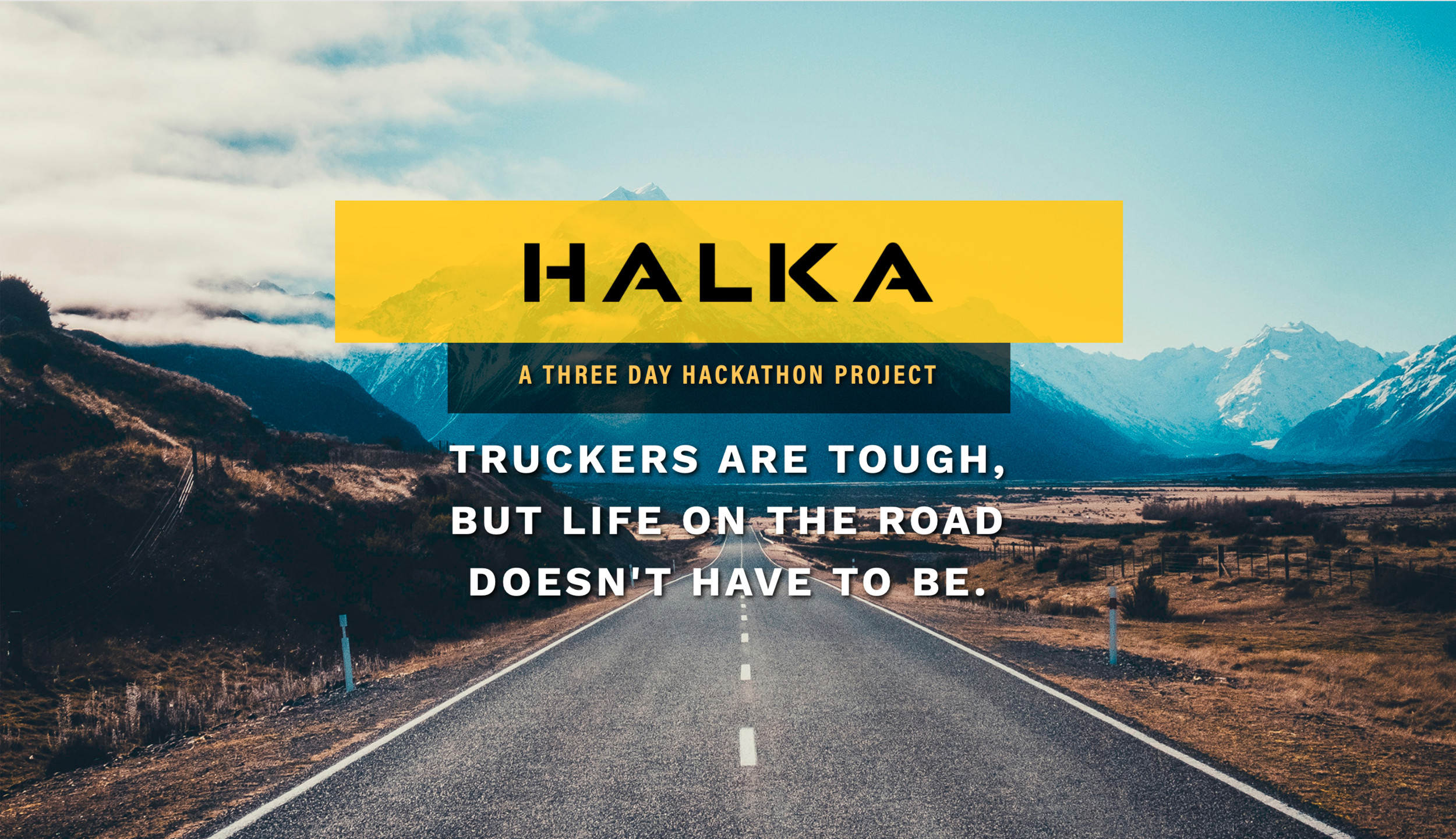
High Fidelity
Hackathon Theme:
Build a product to help delivery drivers or long haulers during the long winter season.
UX Team
Jane Huntington, Noura Ibrahim, David Biedschke, and Casey Auvé
Developer Team
Jennifer Goldberg, Lonna Lu, and Abigail Johnson
Advisors
Jessica Li, Zakiya Konadu, and Rachel Walker
My Role
Prototype and logo design, comparative analysis, and UX writing.
The Problem
Red is a trucker who needs an app that gives him the tools to relax and take care of himself while on the road when he's stressed and not taking care of himself.
We began by looking at meditation and mental health apps Headspace, Calm, Ginger, and Mindshift. Then we started researching what issues truck drivers were experiencing and found several websites (Healthy Trucking and NRS) that dealt with all aspects of truckers' psychological and physical health.
What’s missing from these spaces:
Phone app that speaks directly to long haul drivers’ life on the road and specific mental health needs.
Comparative Analysis
How Might We?
How might we address Red's needs in a way that respects his privacy?
How might we address Red's needs to allow him to access resources when he's sitting in his truck?
How might we get past Red's reluctance to seek help and learn about ways to better his life when on the road?
Features
Halka is an app provided to truckers through their employer. It's completely anonymous, but the trucker is required to check in an hour before starting work. Depending on their response, the user will receive a randomized link to one of the multiple articles that address five primary needs: Immediate action, deep breathing, reframing their thinking, eating on the road, and physical exercise.
After answering five questions on the scale of “not true at all” to “true nearly all the time,” an algorithm divides the responses into three groups:
Group 1: Scores 1 to 2
Driver is in acute distress and needs immediate intervention
Group 2: Scores 3 to 4
Driver has moderate stress, should seek moderate adjustments to lifestyle.
Group 3: Scores perfect 5
Driver is doing well, no need for immediate help.
User Flow
User logs in or signs up for the app
User is given a welcome prompt
User fills out a simple survey
A list of resources is provided based off the user’s answers
User Testing
We were able to pull together 5 user interviews with the short timeframe. The results proved valuable.
Lo-Mid Fidelity
Building low-fidelity wireframes allowed us to brainstorm together in a remote setting; we built the initial pages using Figma and Zoom. Once we finished our task, we would review others' work and provide feedback. We split the workload evenly depending on our skillsets. We needed to create a prototype that the developers could implement in three days.
User Testing
40%
of users picked “Sign In” instead of “Sign Up” when creating a new account.
60%
of users expected to click though instead of clicking “next”
80%
of users said the return touch point was too small
Next Steps
Over the three-day build, we developed a functional website that allowed users to sign in with a unique user handle and take a simple 5 question mental health survey. We also had great branding specific to our base.
Our next steps are:
Step 1: Provide More Help
Hire professional mental health experts to ensure users receive the help they need.
Develop the software to have more nuanced and individualized resources to create a richer and personal experience for the user.
Step 2: Profile & Community
Develop a community space for drivers to connect and explore, opening the platform to their families to stay connected.
Step 3: Enhanced Features
Develop enhanced features for deep breathing and meditation exercises.














